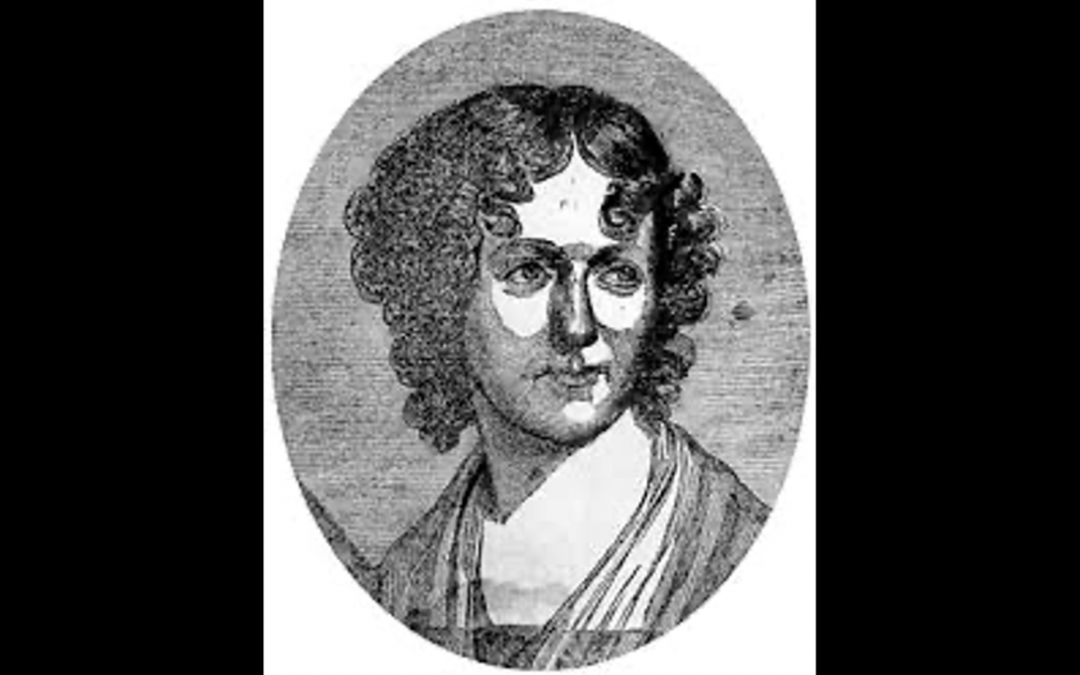by
_____
She was an orphan by the age of three and raised by relatives in Scotland.
She fell in love with the radical promise of the American Revolution, and by the age of 23 was on a ship bound for New York harbor.
Seven years later, in 1825, she became an American citizen.
On this day in 1828, Frances Wright broke the taboo against women speaking in public to mixed gender audiences and delivered her first public speech: “A Celebration of the 52nd Anniversary of American Independence,” in New Harmony, Indiana.
In it she honored the Declaration of Independence and the Fourth of July, but lamented the evil of slavery and called on her fellow citizens to “improve the victory once on this day achieved” so that “all mankind” could join in the celebration.
With the Civil War still thirty-three years in the future, “Franny Wright” spoke out against “the degradation of our coloured citizens” and the legal enslavement of millions of American citizens.
And she argued that each July 4th, Americans should carefully examine “the progress made by our species” and use the occasion as an opportunity to improve “our public institutions, social arrangements, and, above all, in our moral feelings and mental views.”
Her 1828 speech, published on July 9 in The New-Harmony Gazette, came on the heels of Wright’s radical, failed experiment in ending chattel slavery.
She earnestly thought she could bring slavery to an end through rational thinking and planning. She came up with a scheme to purchase, educate, and then emancipate a small group of enslaved people, and at the same time compensate the slaveholders for their lost assets.
Through their own labor, she thought, the slaves would be able to buy their freedom.
Wright invested her own money in a pilot project. She purchased a 640-acre tract in the wilderness of western Tennessee, near what’s now the city of Memphis. She bought 15 slaves, mostly men, and launched a biracial farming community.
Members worked the fields by day, and by night studied in communal schools. She called the community Nashoba, the Chichasaw word for “wolf.”
Her idea was that with hard work and cooperative labor, the settlement would undercut its competitors and prosper financially. It was a bold, utopian scheme — and in short order, a flop.
Wright came down with malaria and returned to England to recuperate. The community became mired in frontier hardship and scandal. Eventually Wright returned to Tennessee and then accompanied the 15 enslaved people to Haiti, where she arranged for their housing and employment and emancipated them. Nashoba had failed.
But Wright realized she could make a bigger impact with her voice.
She set out on a lecture tour across the mid-Atlantic and Midwest. With each speech, her audiences grew. Eventually thousands were flocking to hear her. But at a time when women were expected to remain in the domestic sphere, many people came just to see the spectacle of a woman at the podium.
Her ideas were light years ahead of her time, and not widely popular. She advocated for emancipation of the slaves, universal education, birth control, sexual freedom, legal rights for married women, liberal divorce laws — and against capital punishment, organized religion, and the power of the Christian clergy.
The critics were unsparing. Ministers attacked her from the pulpit. Newspapers called her unfeminine and immoral, “a female monster,” “the red harlot of infidelity.”
She was undeterred. When her lecture tour ended in New York City, she bought an abandoned Baptist church on Broome Street and turned it into a “Hall of Science,” with an audience capacity of 1,200, office space for her newspaper, the Free Enquirer, and a bookstore.
The vilification continued. Someone placed a barrel of turpentine in the doorway of the hall when she was speaking and set it on fire. Another time someone turned off the gas, leaving everyone in darkness.
In September 1838, more than 10,000 people surrounded the Masonic Hall demonstrating against her speech, then as she was leaving attacked her carriage.
Wright soldiered on, never holding back her unorthodox views. She believed rational thought was the most potent tool for social change: “While other nations have still to win reform at the sword’s point,” she said in her New Harmony speech “we have only to will it.”
“While other nations have still to win reform at the sword’s point, we have only to will it.”
In time, Fanny Wright became the most infamous woman in America. Even her name — “Fanny Wrightism” — became a term of ridicule for anyone whose ideas were considered too extreme.
Today, almost no one knows her name.
As the scholar Alyssa Samek points out, many collections of Fourth of July speeches and essays don’t even mention Fanny Wright — “they presume that the orators at these important civic occasions were universally male.”
And because she never managed to stir the emotions of her audience, her speaking career fizzled out. Her speeches were too abstract and cerebral. In 1852 Wright died in Cincinnati, divorced and estranged from her only child, a daughter.
Engraved on her tombstone in Spring Oak Cemetery, Cincinnati, are these words:
“I have wedded the cause of human improvement, staked on it my fortune, my reputation and my life. Humankind is but one family. The education of its youth should be equal and universal.”
At a time when simply speaking as a female in public was a radical act, Fanny Wright demonstrated that a woman’s voice could be powerful. She paved the way for all the other women who followed in her footsteps.
An American by choice, she was a visionary and a patriot committed to the betterment of her adopted land.
On this 4th of July, let’s celebrate Fanny Wright’s plea to build on the victory of the American Revolution and ensure that “all mankind hold with us the Jubilee of Independence.”
© Copyright 2020
________________________________
Want to talk? Reach me at dana@danarubin.com




